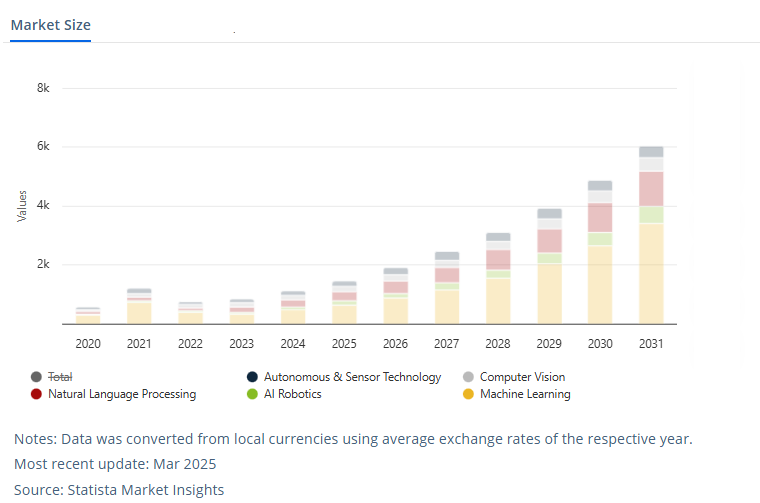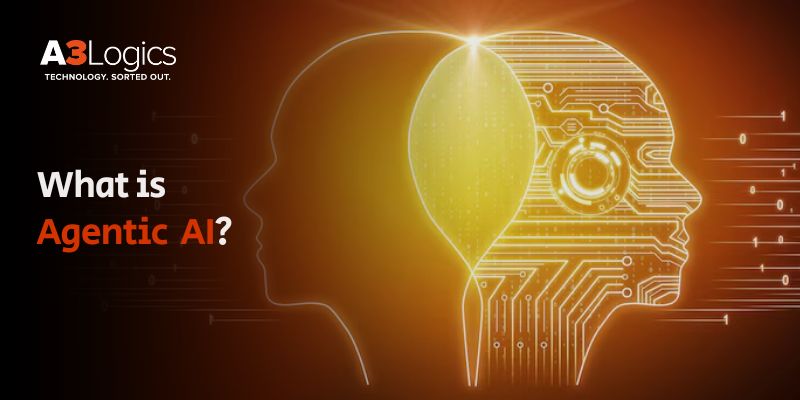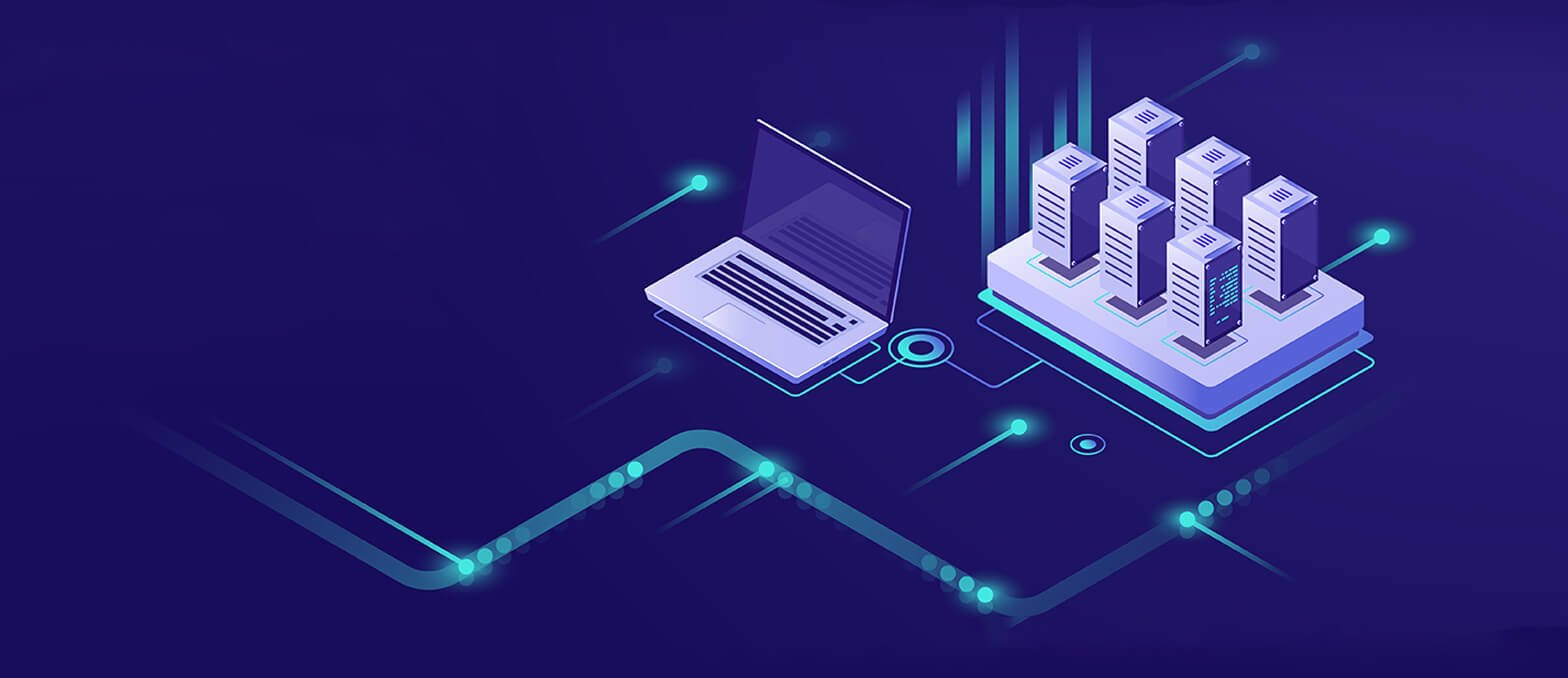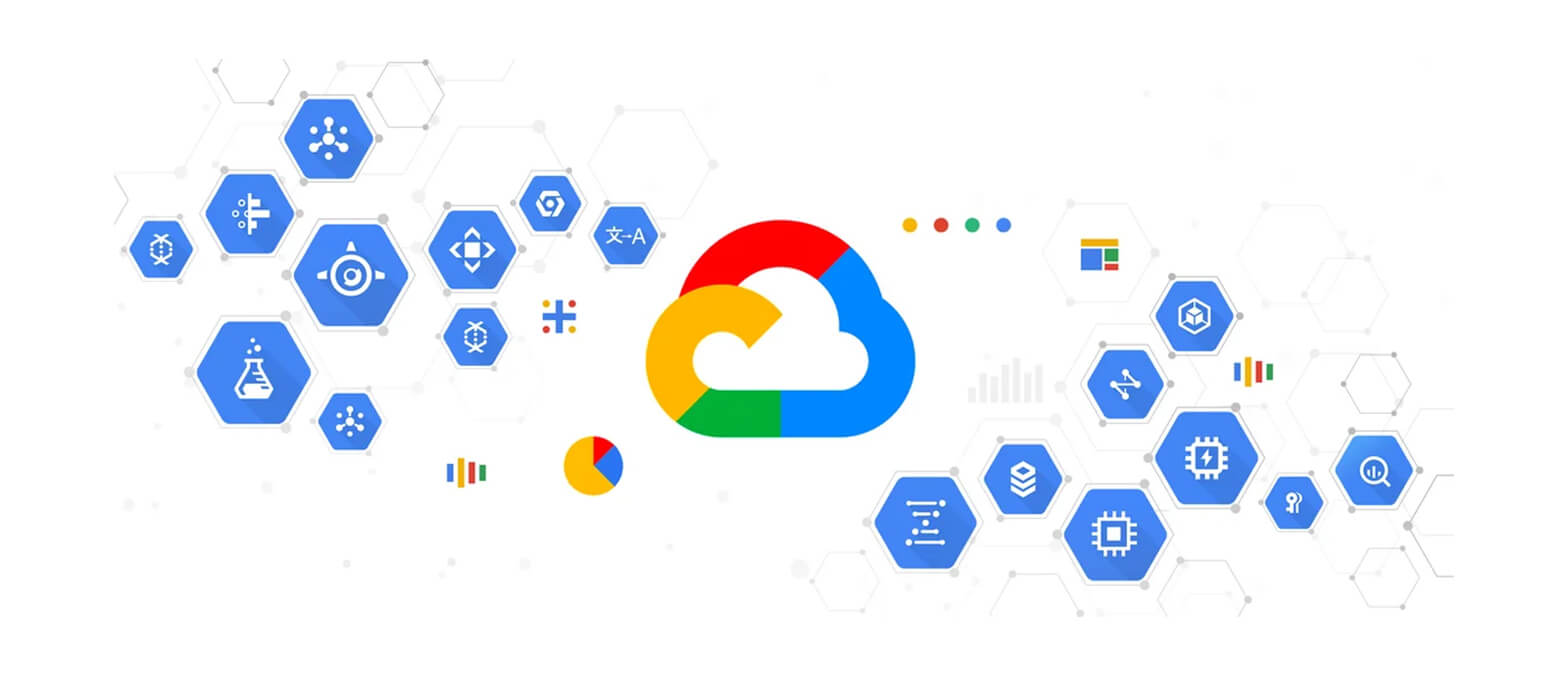Artificial Intelligence, a term that once felt futuristic or far-fetched, has now become a part of everyday life. Whether directly or indirectly, we are constantly surrounded by AI technologies. In this evolving landscape, understanding the difference between AI Agents vs Agentic AI is crucial, as both are shaping the future of automation and intelligent systems in distinct ways.
Whether it is voice-assistant in our smartphones for asking queries, or recommendation engine present in e-commerce websites like Amazon, AI is everywhere. There is a vast market of AI technologies which is currently valued at $244 billion. It is expected to reach a valuation of $800 billion by 2030. In fact, 9 out of 10 organizations back AI to give them a competitive edge over rivals.

Artificial Intelligence Statistics are always lucrative considering the growth and expansion of AI in various industries. AI Agents and Agentic AI are amongst the most dominant forms of AI which are used by organizations in varied aspects.
At first glance, the terms AI Agents vs. agentic AI seem similar or even the same. In fact, these two terms are also used interchangeably, but they mean a lot differently.
These are both artificial intelligence-based technologies that are transforming the workflows of businesses. However, they have very different purposes and functions. Understanding the difference between these technologies is crucial, as investing in an incomplete solution versus transforming your operations and entire organization is crucial. Thus, in this article, we will explore all the major differences and use cases, along with the strengths and challenges associated with each. Let’s begin with the basics of AI Agents vs Agentic AI.
Table of Contents
What are AI Agents?
AI agents are specific software units that are designed to perform specific tasks within certain thresholds. Moreover, these components are major parts of larger systems. In fact, they are purpose-built components that follow predetermined protocols and rules. Consequently, they contribute to the overall functionality and efficiency of the system. Furthermore, their design ensures consistency, reliability, and adaptability within defined parameters.
They are just like digital workers with defined and strict job descriptions. These job descriptions mention all the responsibilities, roles, methods of operation, and success criteria.
Generally speaking, AI bots function using a similar structure. Sensing their surroundings, processing data in accordance with preprogrammed guidelines, and acting within their domain are all included in this. However, these agents can also exhibit autonomous behavior, and the autonomy is contained within the designated functions. For instance, an AI agent designed to handle customer service queries can handle the queries within a predefined set of responses and scenarios. If the queries are not within their data, those queries will redirect to human agents.
The major use cases in which these agents are used:
· Automated customer service management
· Data processing tools
· Scheduling assistants
· Marketing agents
· And others
Basic Structure of AI Agents
There is a fundamental architecture of AI agents by which they can interact with the environment and fulfill the required tasks. There are four key components in the structure:
· Sensors: These components take data from the environment
· Perception System: The data is then processed and interpreted by the perception system
· Decision-making module: These modules identify the right actions as per the programming rules of agents
· Actuators: They are responsible for performing these actions
There is also a knowledge base that contains all rules, procedures, and patterns. This helps the AI agents to reference past experiences and established protocols. The entire structure works on a feedback loop in which outcomes of actions influence future decision-making processes.
What is Agentic AI?
In Agentic AI, the systems can work autonomously and have goal-directed behavior without human involvement. The Agentic AI systems can perceive the environment, reason about complex situations, take independent action, and experience learning. It is different from the traditional AI systems that respond to particular inputs within predetermined parameters.

There are four steps involved in the working of Agentic AI:
1. Perception: Equipment such as sensors, cameras, or digital input fed the data to Agentic AI for sensing and interpreting the information.
2. Decision-Making: The gathered information is evaluated with the application of logic or learned patterns. Then, the most suitable action is selected to achieve the desired objectives.
3. Adaptability: After the action, the Agentic AI learns from the feedback it receives from the environment. It helps in refining its performance.
4. Autonomy: Once goals are encoded into them, they function on their own without constant human supervision or involvement.
With the capability of autonomy, the Agentic AI can change its behavior and handle complex tasks that require sophisticated problem-solving abilities.
Basic Structure of Agentic AI
In the structure of Agentic AI, there are three fundamental components. These are:
· Large Language Models: These models work as the cognitive engine that processes natural language and orchestrates complex behaviors.
· Integrated Tools: These tools are capable of interacting with external software, APIs, and databases.
· Memory Systems: They are responsible for providing short-term retention for ongoing tasks and long-term storage of experiences and knowledge.
After understanding the basic meaning and structure of Agentic AI vs AI Agents, let’s understand their key differences.
AI Agents vs Agentic AI: Key Differences
As a top-notch AI agent development company, if we compare AI agents vs Agentic AI, there are certain factors in which they differ. Let’s know about them.
1. Decision-Making Processes
The structure of processing queries is different in AI Agents vs Agentic AI, though both are capable of decision-making.
In Agentic AI, systems use advanced reasoning capabilities to assess multiple variables and predict outcomes just before acting. It doesn’t just follow set rules but also develops and manages strategies with the changing circumstances.
AI Agents only in their limited boundaries and make decisions using condition-action rules and specific algorithms.
2. Learning and Adaptation
The learning method of Agentic AI is similar to humans. Thus, they have remarkable adaptability through ongoing learning. The behavior gets changed with the processing of new information. There is a feedback loop to boost performance over time. The Agentic AI systems can also apply knowledge across different areas and scenarios.
However, AI developers must specially program agents to manage new situations, as these agents have limited ability to learn in their specific environments.
3. Handling Task Complexity
Both AI Agents vs Agentic AI are capable of managing tasks of varying degrees of complexity. Agentic AI is capable of managing unpredictable and changing environments, while AI Agents can perform only specific and well-defined tasks in a controlled environment. The best example is financial trading. In financial trading, Agentic AI is able to analyze market trends and adapt to strategies instantly while AI agents follow present trading rules.
4. Resource Requirements
Both of these technologies require different levels of computing resources and infrastructure. Agentic AI systems require high computing power along with reliable infrastructure so that they can support advanced reasoning and learning. Furthermore, they also require data access and integration for improved working due to the huge range of applications.
On the other side, AI agents require much fewer resources, which is why they are more cost-efficient for fewer tasks.
5. Cost-Effectiveness
Cost is a crucial factor when we compare AI Agents vs Agentic AI. The initial outlay of cost is high in Agentic AI systems as they require sophisticated infrastructure and resilient computing resources.
However, AI agents are more cost-effective for businesses with specific, well-defined tasks. These agents have simple architecture and limited functionality, which makes the implementation cost quite low.
There are several factors that influence the cost-effectiveness of Agentic AI vs AI Agents:
· Infrastructure: Agentic AI requires a sophisticated and well-built infrastructure
· Maintenance Costs: The maintenance costs of AI agents are much less than those of Agentic AI.
· Scalability: The long-term value is higher in Agentic AI, though the upfront costs are high.
· Training and Updates: AI agents require much less updates for new scenarios
6. Proactiveness
Another major difference between AI Agents vs Agentic AI is how they take action. AI agents have the capability of learning over time, yet they are reactive to specific triggers and requests. For instance, an AI agent might process a password reset request when a user submits it.
You can expect more proactiveness in Agentic AI as it combines multiple agents to adapt and create new solutions. The Agentic AI can take action without being explicitly prompted. For instance, it can identify patterns in access issues, flag potential cybersecurity dangers, and suggest fixes before more complex problems arise.
7. Planning
In terms of planning, there are different approaches to both these technologies. AI agents can be set up to manage everything from quick tasks to long-term goals as per their structure. On the other hand, Agentic AI works by coordinating multiple systems and processes at once, keeping actions aligned with organizational goals, managing complex workflows, and improving processes over time.
Here is a quick glimpse of the differences between Agentic AI vs AI Agents:
| Aspect | Agentic AI | AI Agents |
| Definition | Autonomous systems with goal-directed behavior | Specialized software to perform specific tasks |
| Autonomy | High- No need for human oversight | Limited – Follow predefined rules and protocols |
| Decision-Making | Advanced reasoning assesses multiple variables | Condition-based rules and actions |
| Learning and Adaptation | Continuous learning applies knowledge across areas | Limited to its niche and needs to update to adapt to newer situations |
| Task Complexity | Manage complex tasks in unpredictable environments | Manage specific tasks in controlled settings |
| Core Components | Large Language Models, Integrated Tools, Memory Systems | Low, economical for specific tasks |
| Cost-Effectiveness | The initial cost is quite high but provides better long-term value | Lower implementation costs, good for specific tasks |
| Applications | Self-driving vehicles, personal assistants, industrial automation | Customer Service, data processing, scheduling, marketing |
How do AI Agents Work?
AI agents work by employing sensors to gather data, and control systems can think through hypotheses and solutions. Then, there are actuators to process actions in the real world. There is also a learning system to keep track of its progress and learn from wrong outputs.
Let’s understand how it works in a detailed manner step-by-step:
1. The first stage is Goal Initialization, which is initiated when you input your objective. The core AI model receives the prompt and returns the first output of its internal monologue, displaying that it understands what it wants to do.
2. The next process is to create a task list. As per the goal, it will generate a set of tasks and help us understand which process they must be executed.
3. The agent can obtain information from the internet since it is able to use a computer in the same manner as you. Additionally, I’ve seen agents that can link to other AI models or agents to delegate work and decision-making, giving them access to computer vision characteristics, picture production, and geographic data processing.
4. There is a knowledge system in which the data gets stored, so it can relay back to you and improve its strategy.
5. By collecting data from both external sources and its internal monologue, the agent determines how far it has come from the goal as tasks are marked off the list.
6. The agent will keep iterating until the goal is met. It will also create more tasks and gather more information and feedback.
How Does Agentic AI Work?
In Agentic AI, developers create several autonomous software components known as “agents” that generate massive amounts of data and learn from user behavior to improve. Each agent has its own objectives and skills, and they collaborate to complete challenging tasks. In order to enable agents to learn, interact, and reason efficiently, this novel approach to agentic AI combines cutting-edge technologies, including machine learning, natural language processing, and knowledge representation.
We can better understand it by working through these five steps:
1. The first step is the same. AI agents will gather and decode information from sources like sensors, databases, and interfaces and convert the data into insights. These agents will identify the patterns and extract the most relevant information.
2. It will employ a Large Language Model to guide the reasoning process. The model will perform tasks like understanding, crafting solutions, and coordinating specialized models for jobs like content generation or image analysis.
3. Agents use APIs to connect to external systems and carry out activities. Safety and compliance are ensured by built-in safeguards, such as limiting the processing of insurance claims to a certain amount prior to human inspection.
4. The learning curve of agents improves as they get feedback and get better with every interaction for better decisions.
5. Agent builder tools aim to simplify agent deployment for both novice and seasoned programmers by reducing entrance barriers. Their open-source nature encourages a vibrant community of contributors who continuously improve the platform.
The Advantages of Agentic AI vs AI Agents
Let’s first go through the Agentic AI benefits:
Agentic AI Advantages
1. Improved Adaptability and Efficiency
Agentic AI is adaptable to various dynamic situations and automates complex tasks. It helps in increasing performance and efficiency.
2. Higher Productivity
By bringing automation in repetitive tasks, there is no or low need for human agents. Thus, they can focus on more critical and productive tasks.
3. Smarter Decision Making
The real-time analysis of Agentic AI makes it capable of making quick, informed, and data-driven decisions. Thus, there are better outcomes and improved business performance.
4. Reduction in Costs
With the automation of routine tasks and optimizing workflows, there is a significant reduction in operational costs, allowing businesses to reinvest resources in growth and innovation.
5. Better Customer Service
AI-powered agents can provide instant responses to customer inquiries, reducing wait times and improving customer satisfaction.
AI Agents Advantages
1. Specific Tasks Automation
Although AI agents focus on automating specific tasks, they consistently deliver high precision and reliability.
2. Improved Support Operations
Tasks like password resets, information lookups, and data analysis are easily manageable by AI Agents. Therefore, there is less of a burden on support teams.
3. Better Workflows
AI agents can also automate and optimize workflows, streamline processes, and improve efficiency.
4. Personalized Customer Experiences
As they interact with the users and different scenarios, the AI agents learn and adapt to user behavior with personalized customer support.
5. Scalability
As the number of transactions increases, the AI agents can scale as per the requirements.
How can Businesses Leverage Agentic AI vs AI Agents?
There are various use cases of both Agentic AI and AI Agents. Let’s know their applications in different industries:
Agentic AI Use Cases
a. Self-Driving Cars
Autonomous vehicles are possible because of Agentic AI. Agentic AI systems can perceive the surroundings of autonomous vehicles, make driving decisions, and learn from every trip. With continuous learning, they get better at navigating and managing new challenges.
b. Supply Chain Management
If you are in the logistics or supply chain sector, you can leverage Agentic AI to manage inventory, predict demand, and adjust delivery routes in real-time. AI can ensure smoother and more efficient operations.
c. Cybersecurity
In the cybersecurity world, Agentic AI is highly useful for detecting threats and vulnerabilities by analyzing network activity and automatically responding to potential breaches.
d. Healthcare
In the healthcare industry, AI also plays a big role. Agentic AI can help with patient care management, treatment recommendations, and diagnosis. It examines medical data, finds trends, and assists physicians in making better choices.
AI Agents Use Cases
1. Customer Support
AI Agents for Customer Service now commonly deliver high-quality support. For example, chatbots actively answer questions, resolve issues, and guide customers through various processes. As a result, businesses can enhance user experience and improve efficiency.
2. Personal Assistants
If you use voice assistants like Siri or Google Assistant, you’re likely interacting with an AI agent every day. These assistants actively help with simple yet useful tasks, such as playing your favorite music, setting reminders, and checking the weather. As a result, they make daily routines more convenient and efficient.
3. E-mail Management
AI agents are also helpful in managing your untidy e-mail inbox. They can sort e-mails, flag important ones, and even provide smart replies to save you time.
4. Productivity Tools
AI agents, such as GitHub Copilot, assist software developers by making code recommendations and assisting with debugging. They provide constant assistance, much like a second pair of eyes. This AI Agent increases developer productivity by providing real-time code ideas, freeing them up to concentrate on more imaginative areas of their work.
The Future of AI: Merging AI Agents with Agentic AI
In the last few years, we have witnessed the rapid rise of AI — evolving from managing a few simple tasks to fully overseeing complex business operations with almost no human intervention. As a result, its impact on various industries has been profound. Moreover, the future looks even more promising and exciting, especially with the emergence of Agentic AI and AI Agents. In fact, these advancements are expected to further revolutionize the way we work, interact, and innovate.
As per a report by PWC, industries from legal to healthcare and finance have already started leveraging these systems and are observing cost and time savings.
As a result of these rapid developments, organizations’ perspectives on automation and digital transformation are continuously evolving. Consequently, we are heading toward more advanced systems that not only streamline operations but also integrate Agentic AI’s adaptive intelligence with AI’s proven dependability in completing tasks. Furthermore, this shift paves the way for smarter, more responsive technologies that can better meet the dynamic needs of modern businesses.
Wrapping Up
Both Agentic AI and AI Agents are transforming the world in different ways. While AI agents excel at automating repetitive tasks and handling specific actions, Agentic AI goes further by making decisions and learning from experiences. Consequently, Agentic AI expands the boundaries of what artificial intelligence can achieve.
At A3Logics, we provide the best AI consulting services to help you with all sorts of implementation and development of AI agents or Agentic AI applications. Our developers have vast experience in developing custom AI applications with the latest tools and technologies. Let us know your requirements.








